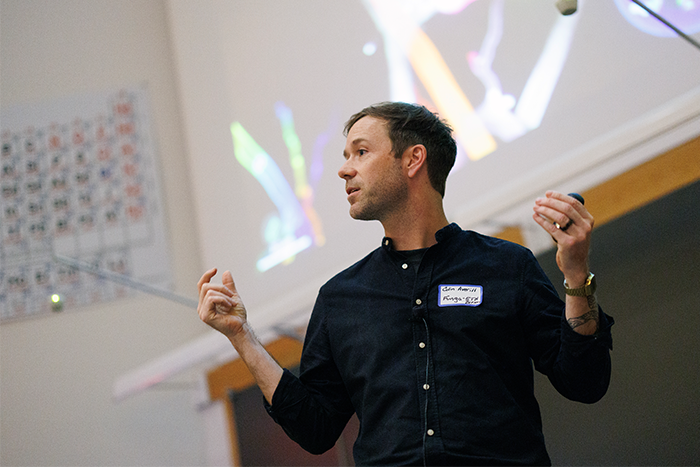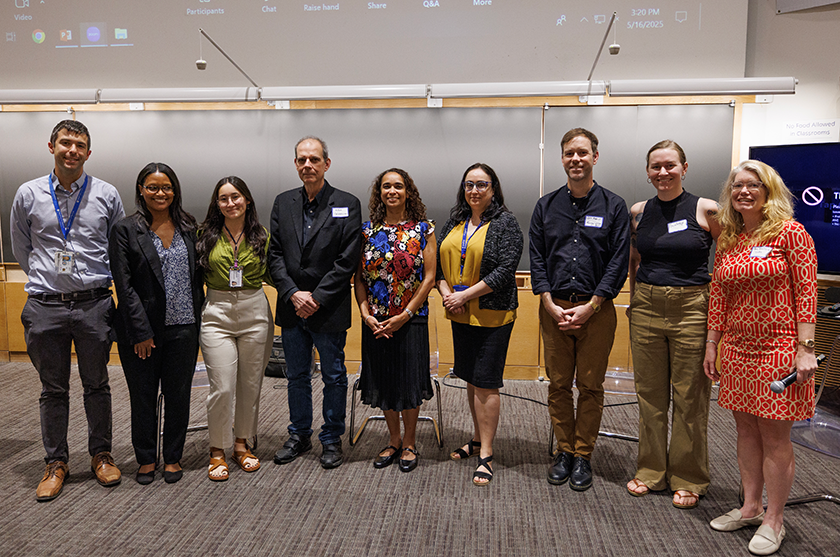
Rising global temperatures are doing more than intensifying storms and heatwaves.
Scientists at the recent "Fungi in a Warming World: Adaptations, Challenges and Resilience" Symposium held at Duke University School of Medicine warned that rising temperatures may be helping environmental fungi to survive inside the human body, putting more people at risk of serious infections.
So far, we’ve had one big advantage: body temperatures too high for most fungi to survive. But that line of defense may be slipping away.
“The thermal barrier is narrowing,” said Arturo Casadevall, MD, PhD, a microbiologist and immunologist at Johns Hopkins Bloomberg School of Public Health. The symposium speaker and author of “What if Fungi Win?” described how a warming world is giving fungi more opportunities to adapt and survive in higher temperatures.
“Whenever the Earth does poorly, fungi do well,” he said at the first-of-its-kind symposium to bring together fungal experts to address the impact of climate change and look for solutions.
While viruses and bacteria dominate infectious disease discussions, fungi are gaining attention, driven by rising real-world infections and TV shows like “The Last of Us,” which dramatizes a fungal apocalypse that Casadevall called “improbable but not impossible.”
It’s not just the rising global average that concerns him. It’s the spikes – the record hot days that now seem to arrive each summer and “each one give fungi a new chance to evolve.”
One potential warning sign is the emergence of Candida auris, a once-rare fungus that has spread rapidly in hospitals across the world. Casadevall said its sudden emergence may be the first wave of heat-tolerant fungi learning to thrive in human hosts.
To stay ahead, he urged scientists to intensify surveillance of fungi in the environment, investigate how temperature stress alters immune responses, and accelerate the development of new antifungal treatments.
Duke researchers are taking on those challenges from sampling mold and fungus post-Hurricane Helene to working with physicians to design better medicines.
“As a group of mycologists at Duke, we are especially focused on how fungi adapt to high temperatures and how changes in the environment contribute to the spread and exposure of people to disease-causing fungi,” said symposium organizer Asiya Gusa, PhD, assistant professor of Molecular Genetics and Microbiology at Duke. “Duke is uniquely poised to make a major impact in advancing the understanding and treatment of fungal infections that are on the rise, in part, due to climate change.”
Gusa’s discovery that heat stress increases drug resistance in a fungal pathogen, and work by Duke scientist and symposium co-organizer Erica J. Washington, PhD, and colleagues, to map a key enzyme that helps fungi survive, highlight new targets for antifungal drugs.

With no vaccines and few treatments, advances like these are vital. Fungal infections claim 3.8 million lives a year – nearly double the toll from a decade ago.
In his talk Duke Health infectious disease specialist Ilan Schwartz, MD, pointed out that those those with weakened immune systems—such as cancer patients in recovery and the growing number of organ transplant recipients—are most at risk of serious fungal infections.
Climate change is also creating new challenges for environmental fungi—some of which are important for agriculture and ecosystems, while others pose growing threats.
A recent review, co-authored by Gusa and Joseph Heitman, PhD, chair of the Department of Molecular Genetics and Microbiology at Duke, revealed that fungal diseases are under recognized and severely underfunded in research. As global temperatures rise, these diseases could wipe out crops and impact the food supply.
But not all fungi are harmful. Some play a crucial role in fighting climate change, said symposium speaker and ecologist Colin Averill, PhD. These beneficial fungi form symbiotic relationships with tree roots, helping trees absorb more water and nutrients and pull more carbon from the air—an important defense against global warming.
Averill, who studies the forest microbiome, is harnessing this relationship to boost forest growth. His startup company Funga is bringing the idea to the biggest timber market in North America—southern pine—by teaming up with nurseries to give seedlings a fungal head start.
Tracking Fungal Growth after Flooding
Black Mountain, NC became a natural laboratory for Duke researchers who gave a preview during the symposium of what they’re learning about the mold samples collected from buildings flooded during Hurricane Helene and a preceding storm.
The floodwaters created ideal conditions for fungal growth during the once-in-10,000-year event that may become more common with climate change, said Vesper Fraunfelter, a Duke research technician and Asheville native.
“All of these homes and businesses that are damaged are filled with material that fungi like to eat like drywall, paper, and wood,” he said. “When they’re flooded that provides a perfect environment for those fungi to grow.”
The team’s work collecting fungal samples in the community could help determine health risks of indoor mold exposure following extreme weather events and how best to prevent them.
More than 110 unique fungal isolates were recovered and the group is working to determine which fungi grow in greater abundance. Unsurprisingly, they found common molds like Penicillium, Aspergillus, and Cladosporium—the green and black molds often implicated in post-flood cleanup.
But the team also detected fungi with known pathogenic relatives—organisms that under certain conditions, such as a weakened immune system or prolonged exposure, could pose health risks.
Duke graduate student Gabby Walker, who is starting their dissertation on this work, described it as both exciting and daunting.
“We’ve opened up a whole new set of questions,” Walker said. “We’re learning not only about health risks, but also about how different building materials might fuel or suppress fungal growth after disasters.”

Fedor Kossakovski, executive director of research communications at Duke University, contributed to this story.